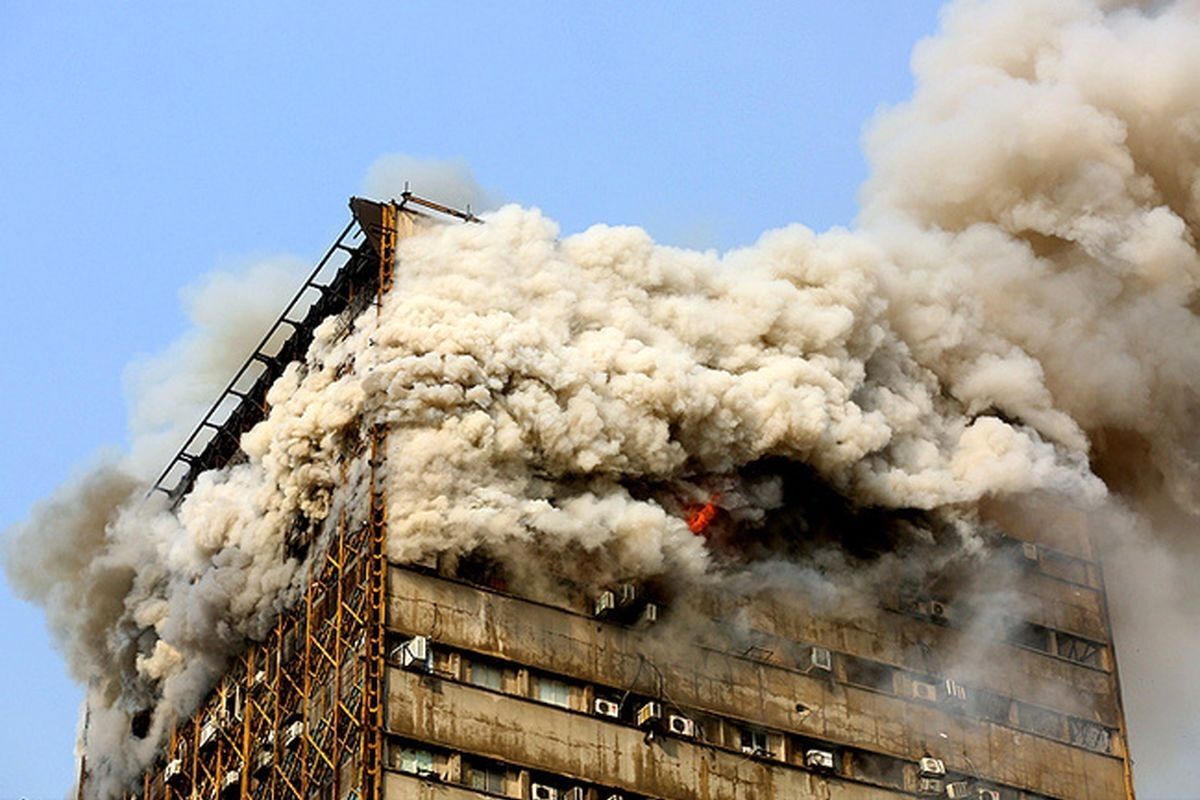
Phase I of Tehran’s Plasco High-Rise Reconstruction Reopens
EghtesadOnline: The northern wing of Plasco commercial tower, which includes 279 stores, was inaugurated on Feb. 3.
Tehran Governor Isa Farhadi noted that with the opening of Phase I of this building, a total of 837 direct and 7,000 indirect jobs have been created.
“Renovation and safety procedures worth 270 billion rials [$1.1 million] carried out for this project were totally financed by shop-owners,” he was quoted as saying by IRNA.
The 17-storey Plasco commercial tower in Jomhouri Street, Iran’s oldest high-rise and an iconic structure in downtown Tehran, built in 1962, caught fire on Jan. 19, 2017. In the incident sparked by an electrical short circuit, 16 firefighters and four civilians lost their lives and some 70 people were injured.
According to Farhadi, owners of stores located in the northern part agreed to finance the reconstruction of the building themselves. Plasco was home to 560 commercial properties.
There are 100 buildings in Tehran with conditions similar to Plasco – a high-rise commercial tower in Tehran that burned down in fire back in 2017 – half of them were shut down after the incident, but the rest are still open, the head of Construction Engineering Organization, Ahmad Khorram, told IRIB News.
Khorram continued, “One thousand buildings, including 30-40 residential and commercial units, 30,000 to 40,000 residential and commercial units altogether, are at the risk of fire. There is an even more terrifying disaster than fire threatening the capital city, i.e. earthquake. Sub-surface layers of the city, to the south of Enqelab Street, [in downtown Tehran] are soft; the ground water level is high. In fact, buildings are floating on a layer of sewage. In the event of a six-magnitude earthquake, these layers will collide and buildings will collapse.
“In the year ending March 2004, Japan International Cooperation Agency conducted a study in Tehran and reached the conclusion that hundreds of thousands of residential units in Tehran will ruin and millions of people will be killed if a six-magnitude earthquake strikes,” he said.
“People need to know that it is better to spend 8% of the total costs of construction on seismic strengthening of the building rather than seeing an earthquake ruining their properties.”
Noting that more than 50% of public buildings are also highly vulnerable and need to become resistant to fire, the official said, “The lifespan of buildings in Iran was an average 30 years in the 1970s; now it has reduced to 23-24 years, whereas in Europe and America their buildings’ lifespan was 30 years and now exceeds 120 years. There’s a long path ahead of us to improve the lifespan of the buildings to 50 years. That won’t be possible by using traditional methods; less than 5% of constructions in Iran are carried out by using industrial techniques and methods.”
“Real-estate development by individuals who don’t have the knowledge and expertise needed in the field has reduced the industry to jerry-building,” the managing director of Maskan Investment Group, the parent company of Bank Maskan, Rouzbeh Zahiri Hashemi says.
“Iran’s construction sector is facing the inflow of inefficient and unprofessional investors for years now. The outcome of absence of a single rule regarding people who are both investors and builders has led to the decline in construction quality, age and the rapid deterioration of residential properties,” he was quoted as saying by Hibna.
Asked why the average lifespan of residential buildings in Iran is much shorter than that of the global average, as the average lifespan of an apartment is 50 years in the world compared to 25-30 years in Iran, he said that is chiefly to blame on the job being done by unprofessional hands rather than by efficient, certified builders.
“Is it possible for ordinary people to manufacture vehicles? Can they secure permits easily? Certainly not! But what if the same people decide to build a house? No legal hurdles would face them. The fact of the matter is that there isn’t a specific, integrated organizing system in place to supervise home construction like that of manufacturing cars.
Underlining the importance of separating investment sector from housing production, the official said, “The point is those who carry out construction work are themselves investors. Those who don’t have expertise are building homes across the country. They don’t have the perspective of a career engineer. They’re jerry builders. The quality of building starts from factories that make construction materials to the time the plan is being executed by professionals.”
Hashemi noted that the lack of safety and technical standards and principles in all phases of the construction projects leads to the premature deterioration of buildings, i.e., before the age of 50.


